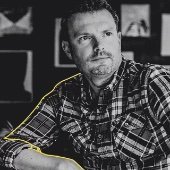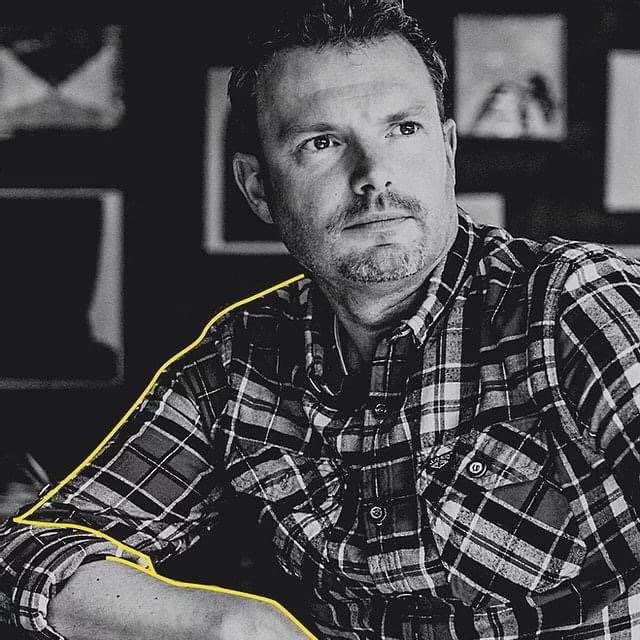-
Posts
4,779 -
Joined
-
Last visited
Content Type
Profiles
Forums
Events
Gallery
Everything posted by JeroenPeters
-
Profimodeller He-111 MG FF Nose Installation P32293 & He-111 MG FF Front “C” Stand P32294 Nose installation available here for 16,64 dollars directly from Profimodeller “C” Stand installation available here for 16,64 dollars directly from Profimodeller In addition to the review below, you might want to check out the MG17 tail installation for the Revell He-111H kit too. Click here. With the much anticipated Revell He-111H6 kit in the wake of the P-1 a perfect fertile ground for After Market companies was created. Whilst the Ju-88 kit builds into a pretty decent model without any AM, the He-111 sure could use some more love. Just take a look at the horrid seat and machine guns. If you compare these parts to the Ju-88 kit, it really is a step back. The MG FF cannon in the Revell kit is pretty basic and offers a rudimentary MG FF shape. The Revell offering: The He-111 family shows a lot of small variations that can be difficult to discern. Small variations that focus mainly on armament. The sets described here let you make variations of the H-series, but I would strongly suggest checking reference of the version you plan to build, as I have learned black isn’t always black and white isn’t always white. The MG FF The Aero Detail book tells us this set up was used in the He-111H-10 to H-16 versions, but it was actually introduced first on the H6 version. See photo below of an H6 with nose armed MG FF. I have seen versions of this with and without the external V41 sight, so again: check your references. Nose MG FF (note: no leather mantlet): Note: Gun sight which is not included in the set: Nice dio idea?: If you do want to include the sight, you may want to scourge the alignment pin and gun sight from a spare Master Barrels set: The low-down: A cool photo from inside the nose: Where the “C” stand MG FF installation intended for ground attack roles, this nose firing MG FF 20 mm cannon was used for defensive purposes. It was (like the MG 15) aimed by hand. This goes for both the nose firing MG FF and the “C” stand installation. The gunner had two joystick-like grips, both containing a fire button on top. The nose version was fed by a drum (4 are included in the set) whereas the “C” stand was fed by a vertical linear magazine. Typically the drum would contain 60 rounds. With a firing rate of 520 shots per minute this would empty quick! On the other hand: when a target was hit by one of it’s high explosive rounds, one hit could be all it took. The nose MG FF set What we get is the typical sturdy white cardboard box we are accustomed to by Profimodeller. Inside we find a lovely golden box containing a single sheet of photo etch, instructions and a mix of yellow and black resin castings. The first thing that strikes is that this isn’t your Quickboost drop-in resin, but rather a small model in itself that calls for skills and good eyesight. 22 parts make up the gun. I’ve written it in previous Profimodeller reviews, but the black resin is something else. It’s much stronger than normal yellow resin and I wonder what makes Profimodeller decide to do the drums in standard resin and other parts in black. It’s definitely easy to work with and you don’t have to be super cautious not to break it while handling. Construction is pretty straightforward and with the black resin not much cleaning up is needed. All you need to do is cut the pieces off the block. Also no modification of Revell parts is needed. 2 PE frames need to be glued to the Revell clear dome. One inside. One outside. After this the whole resin MG FF slides through. I also like the way the rubber/leather mantlet and spent ammo chute is depicted. Very realistic. With the high visibility of this part inside the glass greenhouse this set adds a lot in my opinion. Nose MG FF instructions: Excellent ammo drum: The MG FF “C” stand This set has a few similar parts as the nose version. The barrel (which is nicely thin and hollow), the gun breech and body and the external sight for instance. The gun differs in that it has a stock for the gunners chest and a different ammo feed. The magzines are pretty delicate and done in both yellow (loaded) and black (empty version) resin. The latter showing a very delicate extended carrying handle. Even the 20 mm ammo can be seen inside. For these magazines a photo etch storage rack for 14 magazines is provided. The 2 photo etch frets also include a leather matrass for the gunner, window frame and gunsights. Again: the spent ammo chute is done very nicely with convincing creases. The only shame is that this version of the MG FF will be much less visible once installed! Loaded magazine (2x): Empty magazine: The frame holding the grips (below): Bag with grips and smaller parts: PE fret 1 with magazine storage: PE fret 2 with gun sights and leather matress: Verdict IF you are building the Revell He-111H6 (or other variant with the nose MG FF installed) you really should get the Nose MG FF. Such a large kit deserves it instead of the toy like contraption by Revell. Profimodeller requires some research (since no variants are named in the instructions or on the box, nor are there reference photo’s included) but also skills and a good eye. The material these sets are made from is detailed and strong. But the thing I love most is the attention to detail. When studying reference materials I can’t find any omissions. Except for one strange detail: For some reason Profimodeller decided to not include the round gunsight ring for the Nose version, which is present on many of the reference photo’s I have found. And when the gunsight ring isn’t present, usually the mounting frame for it isn’t either. The “C” stand version does include the gunsight rings. My advise: leave the whole sight off as depicted on the cover of the Aero Detail book J To sum it all up: 15 euro’s buys you a whole lot of visible detail. A special thanks to Profimodeller for the review samples. To order directly from Profimodeller, click here. Kind regards, Jeroen Peters
- 1 reply
-
- profimodeller
- MG FF
-
(and 1 more)
Tagged with:
-

Ohka Model-11 (Cherry Blossom) in 1/32
JeroenPeters replied to TOMc's topic in LSM 1/35 and Larger Work In Progress
All i could find... My advise: leave them on. The wingspan is pretty narrow anyway. -

Ohka Model-11 (Cherry Blossom) in 1/32
JeroenPeters replied to TOMc's topic in LSM 1/35 and Larger Work In Progress
I havent seen photo's of the Ohka without wings. I hope the wing roots stay on the fuse. Otherwise you'll have some scratching in the near future.. -

1/18 Spitfire Mk. XIVe - Race #80
JeroenPeters replied to airscale's topic in LSM 1/35 and Larger Work In Progress
Oh my lord!!!! That is the sweetest start to any build I've ever seen! Please continue... -

Ju-88C-2 "4D+FH" in pieces
JeroenPeters replied to JeroenPeters's topic in LSM 1/35 and Larger Work In Progress
Couldn't wait 2 most fun parts of the build. Weathering and taking masks off.... It's arousing! -

Ju-88C-2 "4D+FH" in pieces
JeroenPeters replied to JeroenPeters's topic in LSM 1/35 and Larger Work In Progress
Cheers Jim, Just love this kit. Even more so second time around. -

Revell bf 109g 6 Elias Kuhlein white 7
JeroenPeters replied to coolboxx's topic in LSM 1/35 and Larger Work In Progress
Liking this a lot! Nice and grimy. Just the way i like 'm. -

Ohka Model-11 (Cherry Blossom) in 1/32
JeroenPeters replied to TOMc's topic in LSM 1/35 and Larger Work In Progress
Cool! The V1 is longer and only just fitted the car. I'm sure this will be a better fit. Are you leaving the wings off? -
Dammit! That looks fantastic!!
-
Never tried it but I can imagine it will add strength. Agree with JimD: Why would you want to add durability?
-
Cool! Might just want to Haggo the tires a bit too though?
- 9 replies
-
- Eduard
- AK Interactive
-
(and 1 more)
Tagged with:
-

No-brainer Spitfire I
JeroenPeters replied to Wingco57's topic in LSM 1/35 and Larger Work In Progress
They do! Great stuff. Waiting for the 262 panel to hit the shelves. Godspeed Cees! -

Ju-88C-2 "4D+FH" in pieces
JeroenPeters replied to JeroenPeters's topic in LSM 1/35 and Larger Work In Progress
Sprayed the codes and balkenkreuz today with the Maketar masks. Worked great. -

a D out of a G.... HK's B-17 conversion
JeroenPeters replied to brahman104's topic in LSM 1/35 and Larger Work In Progress
That Rhino program looks pretty cool to work with. I use Cinema4D but still need a couple of lessons to get to your level.. Great work.- 167 replies
-
- B-17
- scratch built
-
(and 1 more)
Tagged with:
-

Ju-88C-2 "4D+FH" in pieces
JeroenPeters replied to JeroenPeters's topic in LSM 1/35 and Larger Work In Progress
Cheers guys! Plucking away at the camo and strengthening the demarcation lines. In other news: I received James' metal from the real 4D+FH!! Figuring out a way to attach it to the base tastefully. Sprayed the wing root RLM02. Next up: Masking the codes and balkenkreuz. -
Nice one!
-
Can't wait!!
-

Ju-88C-2 "4D+FH" in pieces
JeroenPeters replied to JeroenPeters's topic in LSM 1/35 and Larger Work In Progress
Really happy with the Mr Paint ...ehh... paint!


